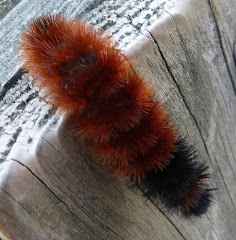Journey to a Land of Water Wind and Fire
Part C: Crater Lake National Park
The Hat in the Ring
Many National Parks feature one predominate feature, a Canyon, a Glacial Valley, a bunch of tall mountains, etc. When you visit them, you spend your time not only looking at the "Big Thing" (the Canyon, Glaciers, Valley, etc.) but also all the little things, and yes often oddities, found within the "Bigger Thing." Crater Lake is no different.
In this National Park you have this one "Big Thing," a Crater filled with water so deep that it forms the deepest lake in North America. Well it is not really a crater, we were infomed by the Rangers, actually it is more accurately identified as a "Caldera." Now, if you have clicked on the last link given you will find that it calls a "Caldera" a "depression." I find this interesting because "The American Heritage College Dic*tion*ar*y" defines a "caldera as: "A Large Crater formed by volcanic explosion or by collapse of a volcanic cone." In other words, they say it is a Crater, albeit a special one. The dictionary and the scientists don't completely agree on this point, but being a history major, who am I to argue? Therefore, let me be more neutral and simply call it a "large hole" okay? Within this "large hole" are several different rock formations sticking out of the water. The most predominate of them is called Wizard Island.
Wizard Island is actually a volcanic cinder cone. A cinder cone is, and this is my "definition" not necessarily the scientific or dictionary one, a pile of cinders and ash that have been thrust up from beneath the earth by the same forces of heat and fire that started the volcanic eruption to begin with. In other words, it is a "heap of cinders."
According to one of the rangers I talked to, Wizard Island is one of the most perfectly formed "heap of cinders" in the world. This is because the cinders and ash produced in the Cascades, and in many other volcanic areas, are not very heavy and thus can be thrown around a lot by the winds once they have been expelled from the earth. However, in this instance, because the "heap of cinders" was down in a "large hole" it was protected from the winds. Thus protected, it was allowed to build up largely guided by the forces beneath the earth.
The name of the formation, Wizard Island, was given by the early "settlers" in the area because the shape of the island resembled what they thought was a Wizard's Hat (though how many of them had actually ever seen a real Wizard's Hat is debateable, further they were living in a pre-Wizard of Oz, and pre- Harry Potter world, a real dark ages if I must say so). It is possible to go out to the island on a boat, but I will deal with the activitiy in a later post (no we didn't go out there, and you will find out why later).
The Wizard's Hat is probably the most noticable feature in the lake and can be seen from just about any vantage point available. This is unlike the other well-known feature of Crater Lake, Phantom Ship. This formation will be the subject of the next posting.







No comments:
Post a Comment